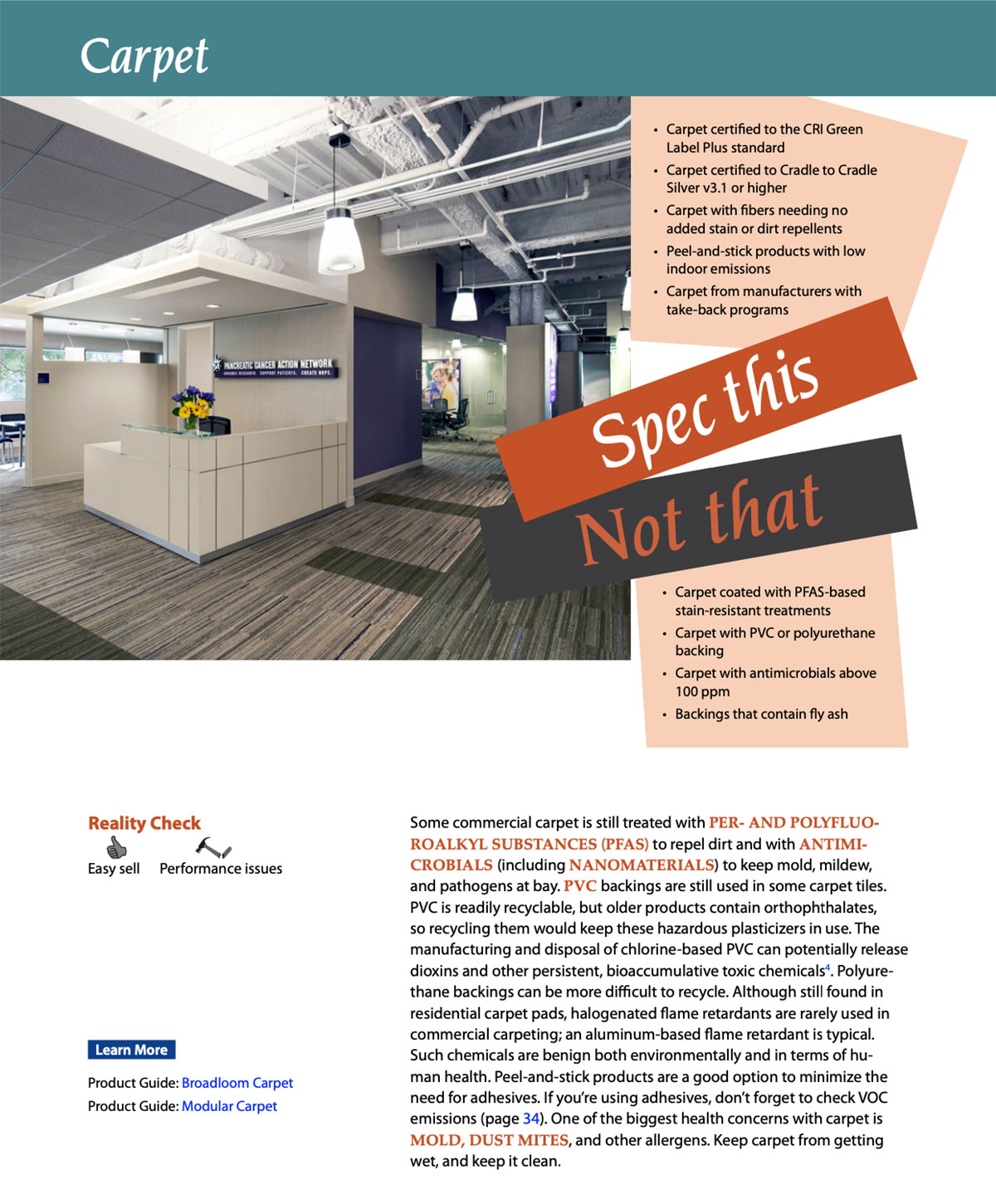PDF Report
Spec This, Not That: Avoiding Toxic Chemicals in Commercial Building Projects
Avoiding Toxic Chemicals in Commercial Building Projects
We’re excited to issue our special report, Spec This, Not That.
In updating the report in 2020, we engaged a respected toxicology and regulatory-compliance firm to review and assist in our revision of the entire publication. This edition reflects the latest science in several key areas and an extensive new End Notes section with citations for technical statements made throughout the report.
We’re pleased to offer a report that’s better than ever. We hope you find it useful, and we welcome your feedback.
If you are interested in sharing this report within your organization and adding a copy to your library, please purchase the site-license report
Designers and specifiers from numerous leading firms are figuring out that it is possible to identify healthier products and materials and still create gorgeous, energy-efficient, occupant-friendly buildings—without busting budgets or getting overwhelmed by complex health and chemical data.
A handbook of common hazards — and how to keep them out
Building on a guide first published in 2012, this special report, Spec This, Not That, details approaches used by architects, designers, contractors, and building owners to reduce chemical hazards in their building projects.
We added our expert writers’ at-your-fingertips insights for designers and spec writers on which hazards to watch out for in the major building product and material categories.
Grab Essential Rules of Thumb
In a hurry? Part 1 of Spec This, Not That offers quick takes, revealing exactly what to select and what to avoid in each product category.
Ready to go deeper? Gain specialized knowledge with expertise on:
- The 6 major types of chemicals to avoid
- A quick reference guide to 33 common hazards
- A course in “Toxicology 101”
- Rich, informative explanations of the dangers of specific chemical categories—like VOCs, persistent organic pollutants, and nanomaterials
- The skinny on decision-making resources, like red lists, product certifications, and HPDs
Now, take it to the real world. Four case studies go in-depth on how project teams approached the problem of toxicity—setting priorities, developing plans, and ultimately implementing their own guidelines for avoiding hazards.
As an added bonus, this report has been approved by AIA and GBCI for 3.5 continuing education credits.
Whether you’re looking for the skim or the deep dive, this special report from BuildingGreen is an essential resource for project teams navigating the murky waters of avoiding toxic chemicals.
Sample page:




